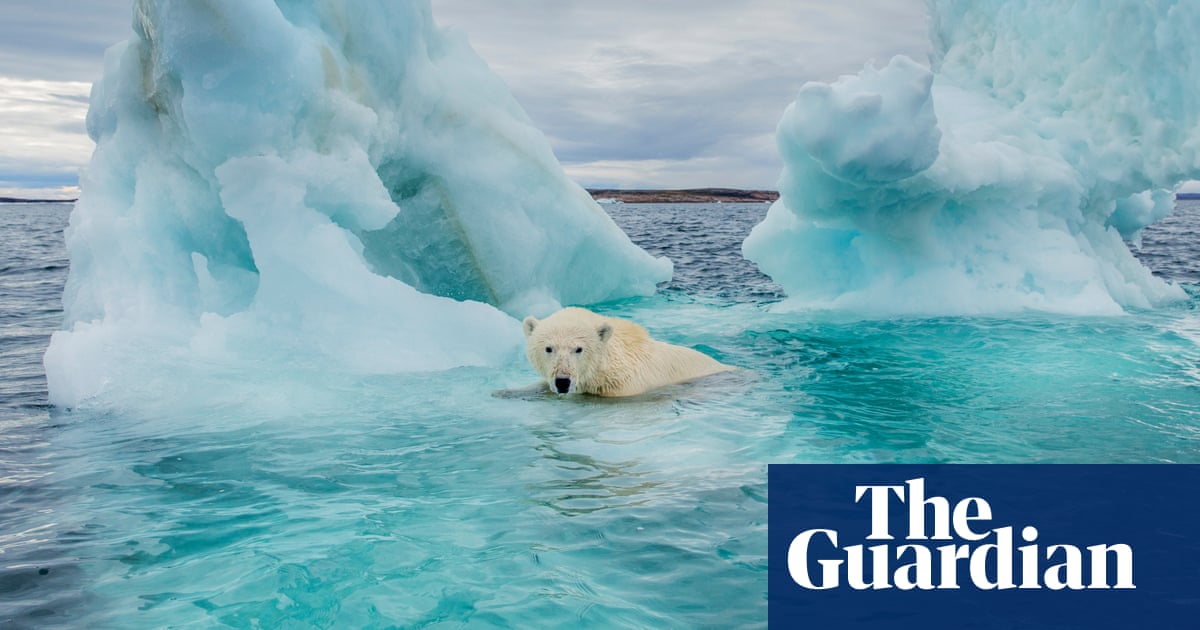
The oil company ConocoPhillips had a problem.
It wanted to pump 160,000 more barrels of oil each day from a new project on Alaska’s North Slope. But the fossil fuels it and others produce are leading to global heating, and the Arctic is melting. The firm’s drilling infrastructure could be at risk atop thawing and unstable permafrost.
A recent environmental review of the project describes the company’s solution: cooling devices that will chill the ground beneath its structures, insulating them from the effects of the climate crisis.
The oil development that is fueling climate change continues to expand in the far north, with companies moving into new areas even as they are paying for special measures to protect equipment from the dangers of thawing permafrost and increasing rainfall – both expected outcomes as Arctic temperatures rise three times as fast as those elsewhere.
Countries from Norway to Russia are advancing new Arctic oil developments. But under Donald Trump’s administration, Alaska has emerged as a hotbed of Arctic oil extraction, with big projects moving forward and millions of acres proposed to be opened to leasing.
The administration recently finalized its plan to open a piece of the Arctic national wildlife refuge to the oil industry. And drilling is expanding at an Indiana-sized region next door: the National Petroleum Reserve in Alaska, which, despite its name, also contains treasured subsistence areas for locals.
Critics of Arctic oil expansion argue that while companies can use technology to temporarily and locally dampen climate disruptions, the region’s indigenous residents cannot. And even some who support oil development in the region argue that the Trump administration’s plans go too far.
At the start of Trump’s term, the mayor of the oil-rich North Slope borough, an Iñupiaq whale hunter named Harry Brower Jr, endorsed the federal government’s plans to push development forward in the Arctic refuge and in the petroleum reserve.
Taxes on infrastructure at the huge Prudhoe Bay oilfield help generate nearly $400m a year for the 10,000-person borough, which is almost all of its revenue.
Three years after Brower’s endorsement, the administration released a rewritten management plan that would vastly expand the share of the petroleum reserve open to oil companies: four-fifths of the area would be available, up from roughly half now.
But the proposal also would allow oil and gas leasing at Teshekpuk Lake, which Brower had asked the Trump administration to keep off-limits. The lake, in tandem with nearby wetlands, is considered one of the most important animal habitats in the entire Arctic, and the region’s indigenous residents harvest its abundant fish and wildlife.
“It’s like God’s country,” said George Ahmaogak Sr, a former mayor of the North Slope borough, who has built three subsistence fishing cabins not far from the lake. “I’ve lived there, I’ve seen it and I subsisted on it, and it’s beautiful – resources are bountiful there.”
The lake hosts birds that come from all seven continents. Molting geese, unable to fly, try to avoid predators by forming rafts in the middle of lakes, sometimes by the thousands. And hundreds, even thousands, of migrating caribou travel along Teshekpuk Lake’s shore.
“I’m not an environmentalist or anything like that – I’ve been pro-development all these years,” Ahmaogak said. “But Teshekpuk is a concern of mine, and I wanted to see it protected.”
The North Slope is already warming at disconcerting speed. Utqiagvik, the region’s hub town, is one of the fastest-warming communities in the nation, with its five record warmest winters all coming since 2014.
Amid record high temperatures and record low sea ice last year, crews in Utqiagvik had to wait weeks longer than usual for the arrival of the bowhead whales that they hunt – and which make up a substantial portion of North Slope residents’ diets.
Amid that rapid change, the oil industry is enjoying a renaissance in the region, in part thanks to technologies enabling infrastructure to withstand climatic shifts. Such technology is decades old, but veterans of the oil industry say that demand for it is becoming more ubiquitous and intense as the Arctic heats up.
One Alaska company, BeadedStream, sells equipment that measures and transmits tundra temperature data, so that the oil industry can know as soon as it is frozen solid enough to transport equipment, according to National Public Radio. Another firm, Arctic Foundations, is doing increasingly brisk business selling thermosiphons – the tubes that pull heat out of the ground to keep permafrost from thawing underneath oil infrastructure.
ConocoPhillips plans to make use of these devices at its massive Willow project in the National Petroleum Reserve, and it’s also building taller bridges and wider culverts to accommodate larger spring floods.
The backers of another new project, meanwhile, see opportunity in the thaw. The melting of Arctic sea ice removes an obstacle from shipping liquefied natural gas off Alaska’s North Slope, according to the Anchorage-based company, Qilak LNG.
“Our reliability quotient goes up,” said Mead Treadwell, the Republican businessman and former Alaska lieutenant governor who has helped to spearhead the project. “Climate change, the changing composition of sea ice, has made this more economic.”
At Teshekpuk Lake, the Trump administration says it can protect the region’s caribou, birds and fish with tight restrictions and time frames for drilling and development. No infrastructure would be allowed on or next to the lake itself; companies would have to drill horizontally to access it.
That’s not enough for conservation groups, which sued to block the rewritten plan in August.
“Out of all the places in the world, the Arctic is changing the fastest,” said Natalie Dawson, the head of the Audubon Society’s Alaska branch. “So, we might want to give ourselves a little bit of room to figure out what we want to protect.”
Qaiyaan Harcharek, a 38-year-old Iñupiaq hunter, fisherman and trapper, said he is disgusted by the Teshekpuk proposal. He called the area a “guaranteed food source” that his ancestors turned to in times of starvation.
Opening Teshekpuk, Harcharek said, is “absolutely reckless and dangerous”.












